5:42 PM 2/3/2019 - Did Bielski partisans serve in Abwehr SA? The German, Russian, Belorussian, and Polish wartime Archives should hold the answers, and this information should be researched and published.
- Get link
- X
- Other Apps

5:42 PM 2/3/2019 - Did Bielski partisans serve in Abwehr SA? The German, Russian, Belorussian, and Polish wartime Archives should hold the answers, and this information should be researched and published. - M.N.
Michael Novakhov - SharedNewsLinks℠ - 25
-
| Michael Novakhov - SharedNewsLinks℠ | ||
|---|---|---|
| Did Bielski partisans serve in Abwehr SA? - Google Search | ||
| ||
| Did Bielski partisans serve in Abwehr SA? - Google Search | ||
 | ||
| Did Bielski partisans serve in Abwehr SA? - Google Search | ||
 | ||
| Did Bielski partisans serve in Abwehr SA? - Google Search | ||
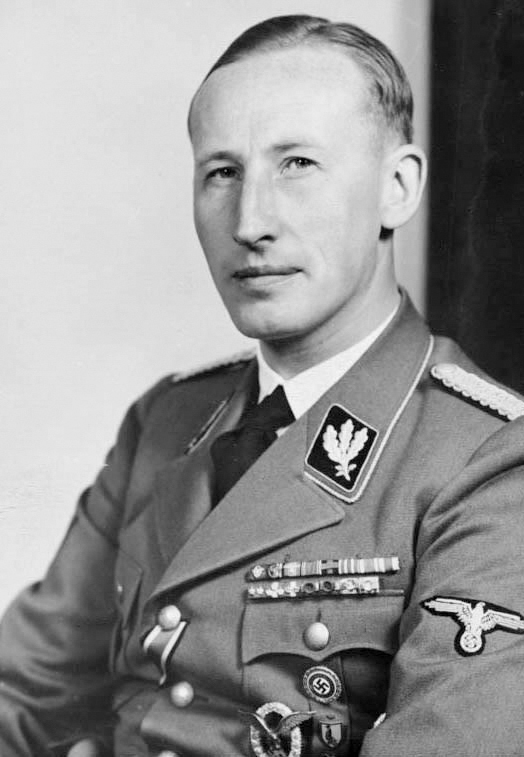 | ||
| Did Bielski partisans serve in Abwehr SA? - Google Search | ||
 | ||
| Did Bielski partisans serve in Abwehr SA? - Google Search | ||
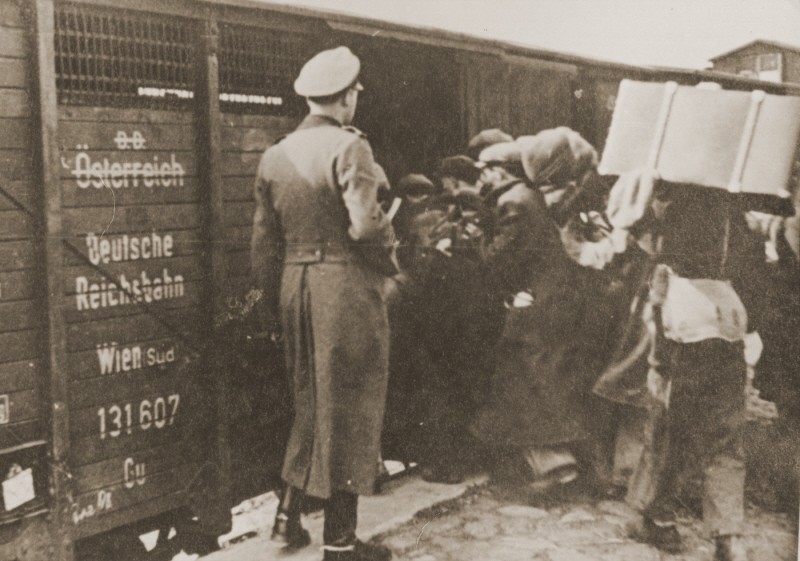 | ||
| Did Bielski partisans serve in Abwehr SA? - Google Search | ||
 | ||
| Did Bielski partisans serve in Abwehr SA? - Google Search | ||
 | ||
| Did Bielski partisans serve in Abwehr SA? - Google Search | ||
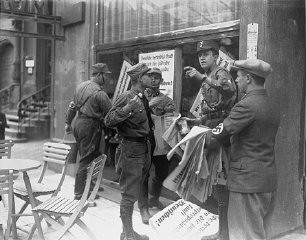 | ||
| Did Bielski partisans serve in Abwehr SA? - Google Search | ||
| ||
| Did Bielski partisans serve in Abwehr SA? - Google Search | ||
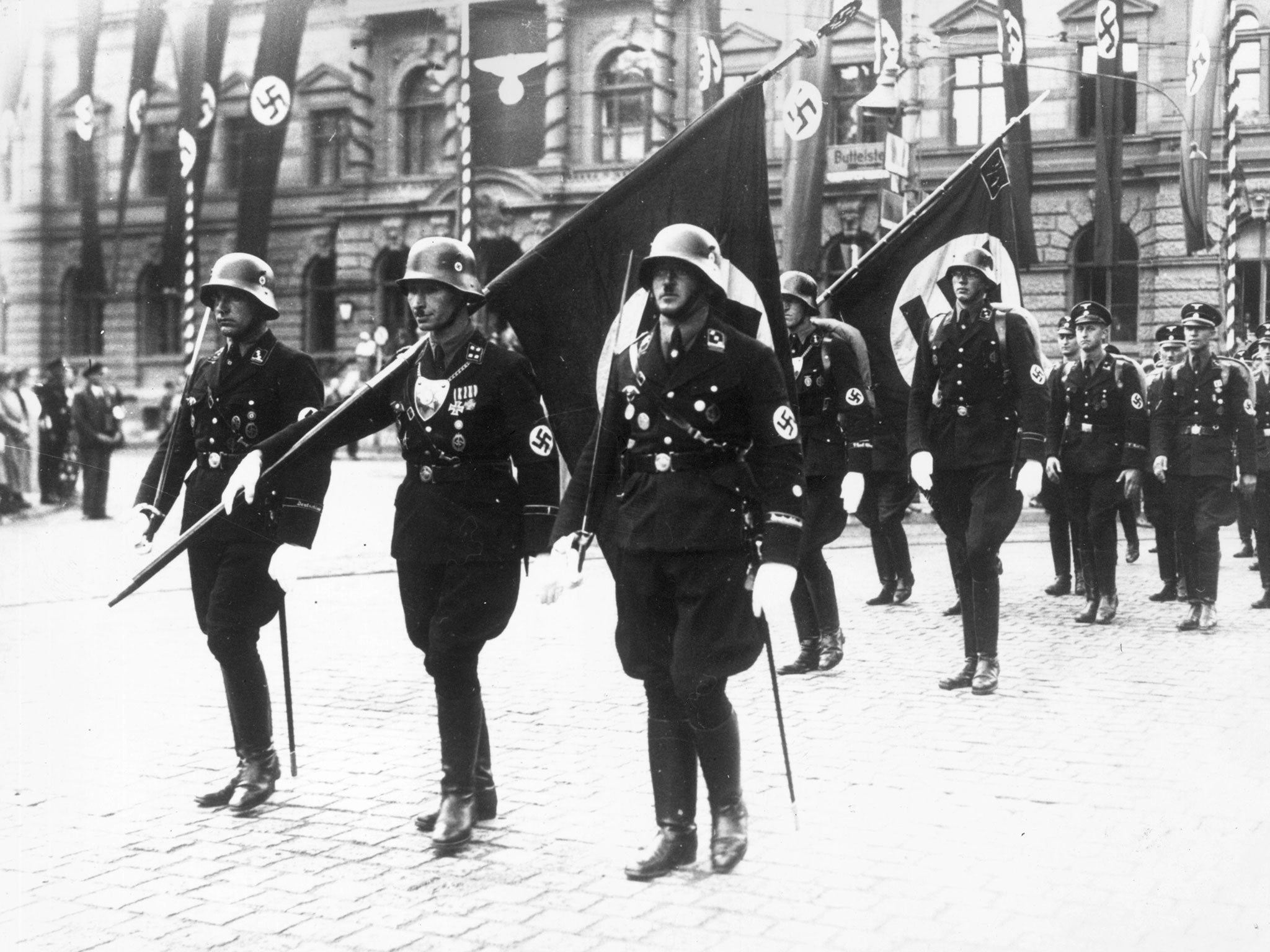 | ||
| Did Bielski partisans serve in Abwehr SA? - Google Search | ||
 | ||
| Did Bielski partisans serve in Abwehr SA? - Google Search | ||
| ||
| Orlando ("The Hypnotist"), T(i), SA Hyatt (Higher At) Regency: Jared Kushner? - Google Search | ||
 | ||
| Orlando ("The Hypnotist"), T(i), SA Hyatt (Higher At) Regency: Jared Kushner? - Google Search | ||
| ||
| Orlando ("The Hypnotist"), T(i), SA Hyatt (Higher At) Regency: Jared Kushner? - Google Search | ||
 | ||
| Orlando ("The Hypnotist"), T(i), SA Hyatt (Higher At) Regency: Jared Kushner? - Google Search | ||
 | ||
| Orlando ("The Hypnotist"), T(i), SA Hyatt (Higher At) Regency: Jared Kushner? - Google Search | ||
 | ||
| Orlando ("The Hypnotist"), T(i), SA Hyatt (Higher At) Regency: Jared Kushner? - Google Search | ||
 | ||
| Did Bielski partisans serve in Abwehr SA? - Google Search | ||
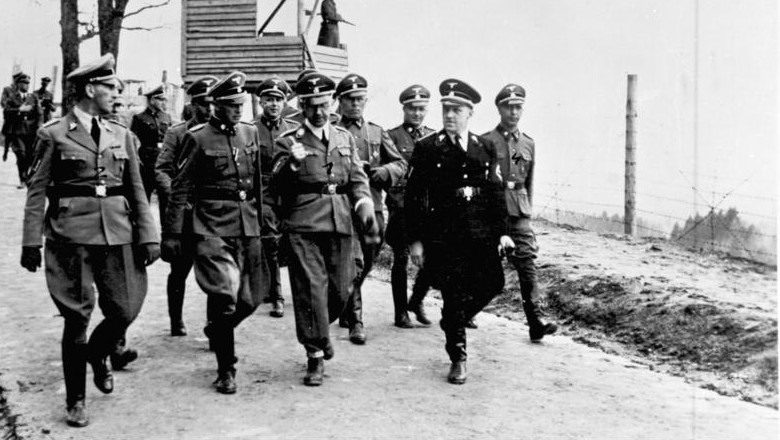 | ||
| Did Bielski partisans serve in Abwehr SA? - Google Search | ||
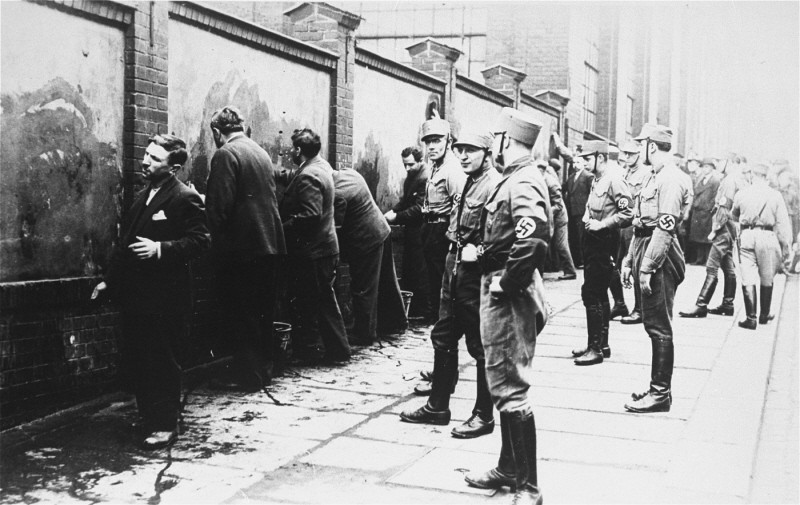 | ||
| Did Bielski partisans serve in Abwehr SA? - Google Search | ||
 | ||
| Did Bielski partisans serve in Abwehr SA? - Google Search | ||
| ||
| Did Bielski partisans serve in Abwehr SA? - Google Search | ||
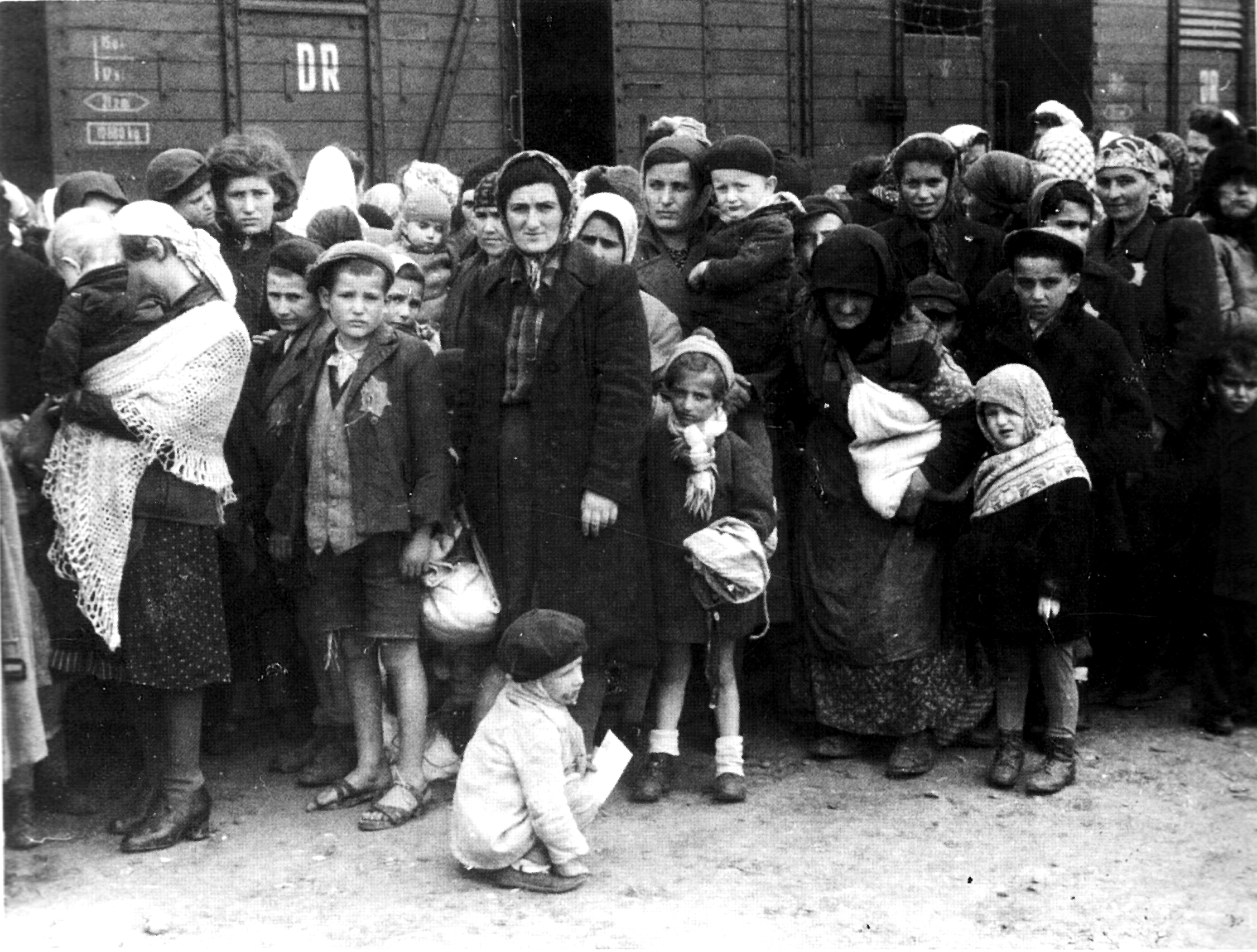 | ||
| Bielski partisans | Revolvy | ||
The Bielski partisans were a unit of Jewish partisans who rescued Jews from extermination and fought the German occupiers and their collaborators around Nowogródek (Navahrudak) and Lida (now in western Belarus) in German-occupied Poland. The partisan unit was named after the Bielskis, a family of Polish Jews who organized and led the organization.
BackgroundBefore World War II, the Bielski family had been millers and grocers[3] in Stankiewicze (Stankievichy), near Nowogródek, an area that at the outbreak of the war belonged to Poland and in September 1939 was occupied by the Soviet Union (cf. Polish September Campaign and Soviet invasion of Poland (1939)) in accord with the Molotov–Ribbentrop Pact between Germany and the Soviet Union. Before the war, Tuvia Bielski had received training in the Polish Army. After performing reserve duty, he engaged in trade, eventually becoming a smuggler.[4] Under the Soviet occupation of eastern Poland, the remainder of the Bielski family served as low-level administrators for the Soviets, with Tuvia Bielski becoming a Soviet commissar.[4][5] This strained the Bielskis' relations with local Poles, who were subjected to Soviet repressions. During Operation Barbarossa, the German invasion of the Soviet Union beginning 22 June 1941, Nowogródek became a Jewish ghetto, as the Germans took over the area and implemented their genocidal policies (see Holocaust in Poland and Holocaust in Belarus). PartisansFormationThe four Bielski brothers, Tuvia, Alexander (also known as "Zus"), Asael, and Aron, managed to flee into the nearby forests after their parents and other family members had been killed in the ghetto on 8 December 1941. In the spring of 1942, together with 13 ghetto neighbors, they formed the nucleus of a partisan combat unit. The unit originally numbered some 40 people, but quickly grew. The unit's commander was the oldest brother, Tuvia, who had served in the Polish Army from 1927 to 1929, rising to the rank of corporal. He had been interested in the Zionist youth movement. He sent emissaries to infiltrate the area's ghettos, recruiting new members to the unit, which was sheltering in the Naliboki Forest. Hundreds of men, women, and children eventually found their way to the Bielski encampment; at its peak, the unit hosted 1,236 people, 70% of them women, children, and elderly; no one was turned away.[1] About 150 persons engaged in armed operations.[1] OrganizationThe partisans lived in underground dugouts (zemlyankas) or bunkers. In addition, several utility structures were built: a kitchen, a mill, a bakery, a bathhouse, a medical clinic for the sick and wounded and a quarantine hut for those who suffered from infectious diseases such as typhus. Herds of cows supplied milk. Artisans made goods and carried out repairs, providing the combatants with logistical support that later served the Soviet partisan units in the vicinity as well. More than 125 workers toiled in the workshops, which became famous among partisans far beyond the Bielski base. Tailors patched up old clothing and stitched together new garments; shoemakers fixed old and made new footwear; leather-workers laboured on belts, bridles and saddles. A metalworking shop established by Shmuel Oppenheim repaired damaged weapons and constructed new ones from spare parts. A tannery, constructed to produce the hide for cobblersand leather workers, became a de facto synagogue because several tanners were devout Hasidic Jews. Carpenters, hat-makers, barbers and watchmakers served their own community and guests. The camp's many children attended class in the dugout set up as a school. The camp even had its own jail and court of law.[6] Some accounts note the inequality between well-off partisans and poor inhabitants of the camp.[7] According to one of Tuvia Bielski's cousins who lived in the camp, relayed to her daughter, women were forced to strip naked upon entry and give up their underwear as a form of "entry ticket".[7] Internal conflictTuvia Bielski was known for his authoritarian leadership style and was constantly involved in power struggles with other members of the unit. Israel Kessler, who tried to organize a group of people to leave the Bielski camp and form their own unit,[8] and others sent letters to General Platon and other Soviet officials that Tuvia Bielski was holding gold and jewelry in contradiction to partisan orders to hand these over to headquarters. A unit member, Stepan Szupien, suggested to the Soviets that they arrest and execute Bielski, accusing him of confiscating money under the pretext of buying weapons.[9]The Soviet command, concerned about the unit's leadership, began an internal investigation into an alleged protection racket conducted by Bielski. Chernishev cleared Bielski of the charges following an investigation.[8][10] Bielski viewed Kessler's actions as rebellion, put Kessler on trial, and executed him.[8] According to witness Estera Gorodejska, a drunk Bielski personally executed Kessler with three shots. Later Bielski ordered the destruction of Kessler's grave.[11] ActivitiesThe Bielski unit's partisans were primarily concerned with survival. Due to their poor equipment and training, they were not assigned main combat roles. Instead, its members operated field kitchens, hospitals, and bakeries and provided tailoring and cobbling services for Soviet soldiers.[12] Their main task, though, was forced requisitioning of food and other supplies from the local population.[12] The Bielski partisan group decided to prioritize saving Jews,[13] according to Tuvia Bielski "I would rather save one old Jewish woman than kill ten German soldiers".[14] The Bielski partisans' targets also included the Germans and their collaborators who had betrayed or killed Jews, such as Belarusian volunteer policemen and local inhabitants, as well as their families. In one case, the Bielski partisans killed some 12 people from a Belorussian family who had betrayed 2 Jewish girls to the Germans. In another, the Bielski partisans killed several collaborators whose names they extracted from Ivan Tzwirkes, a collaborator with a Jewish wife.[15] They also conducted sabotage. At the beginning of 1943 German planes dropped leaflets in the area promising a 50,000 Reichsmark reward for assistance in the capture of Tuvia Bielski, this figure was subsequently doubled to 100,000 RM. The leaflets, which were intended for the Christian population, also reached Jews and provided motivation and courage to attempt an escape to the forest camp.[16] In August 1943 the Germans conducted a major clearing operation, Operation Hermann also dubbed the "big hunt", against villages and partisan groups in the Naliboki Forest. Partisan groups in the forest and surrounding villages suffered major casualties. The Bielski partisans, however, split into small groups and assembled back in their former base in the Jasinowo forest.[17] The communities around the Naliboki forest were devastated, the Germans deported the non-Jewish residents fit for work to Germany for slave labor and murdered most of the rest. Prior to the manhunt, homeless refugees were mainly Jews who had escaped the ghetto, but in the fall of 1943 non-Jewish Belorussian, Polish, and Gypsies who managed to flee roamed in the forest. Many joined partisan units, special family camps set up by the Soviets, and some joined the Bielski group who returned to the area and accepted anyone willing to join. While the Germans wrecked many communities, much was left behind in and around the forest that could sustain life. Fields, orchards, and beehives all had their produce and farm animals roamed the area around the forest. While the buildings of the villages were partially demolished, much of the building material was left usable as well as some household goods. The Bielski group foraged and gathered much of these materials, and tended to the fields.[18] The Bielski partisans eventually became affiliated with Soviet organisations in the vicinity of the Naliboki Forest under General Platon (Vasily Yefimovich Chernyshev). Several attempts by Soviet commanders to absorb the Bielski fighters into their units were resisted, and the Jewish partisan group retained its integrity and remained under Tuvia Bielski's command. This allowed him to continue his mission of protecting Jewish lives and engaging in combat activity, but it would prove a problem later on. In September 1943 General Platon ordered the splitting of the group. The first group, named Ordzhonikidze (a famous Georgian communist), was a 180 mainly Jewish fighting detachment (commanded by a non-Jew Lyushenko). All the rest were designated as Kalinin and included some 800 people, including 160 armed defenders, that were based in Naliboki forest and provided services to other partisan groups in the forest as well as participating in sabotage and diversionary actions. On 1 April 1944 the group was renamed as the Bielski otriad.[15] Like other Soviet-affiliated partisan groups in the area, the Bielski partisans raided nearby villages and forcibly seized food; on occasion, peasants who refused to share their food with the partisans were subjected to violence, even murder. This caused hostility toward the partisans on the part of the peasants, though some willingly helped the Jewish partisans. Other peasants informed on the Jewish partisans in the forests to the Germans.[19] As the region had already been completely pacified by the Germans, and many villages had been burned down, the local population was in an especially dire situation.[20][21][22][23] The Belorussian farmers struggled to supply all the forces who were demanding food (Germans, Soviet, and Jews). One of the partisans said that "A partisan was something between a hero and a robber. We had to live and we had to deprive the peasants of their meager belongings", and that "Often we took by force from poor peasants who were not even pro-Nazi." The partisans of the Bielski and Simcha Zorin units became infamous among locals for their ruthlessness during raids, so much so that stopping their depredations became a chief point in negotiations between the Soviet command and the Polish Home Army.[24] The Polish resistance officially complained to the Soviets about alleged rapes and murders, including murders of young children, committed by these Soviet partisan groups, and asked the Soviet command to stop their food-requisitioning expeditions.[2] At the beginning of December 1943, Bielski's unit gathered 200 tonnes of potatoes, 3 tonnes of cabbage, 5 tonnes of beets, 5 tonnes of wheat, 3 tonnes of meat and one tonne of sausages. Dividing this by members of the camp (1200) it made 160 kilos of potatoes, 4 kilos of wheat, 2.5 kilos of meat, and 0.83 kilos of sausages per person. The partisans themselves admitted that they had overabundance of food, and the Zorin unit even sent some of the food supplies back to Moscow using delivery planes that supplied newspapers and propaganda materials.[25] Assessment of combat operationsAccording to Kazimierz Krajewski, a November 1943 report from Tuvia Bielski to the Soviet command stated that in two years' operations their group of nearly a thousand people had managed to kill 14 Germans, 17 policemen, and 33 spies and provocateurs (Krajewski thinks these likely included peasants unsympathetic to Soviet partisans or who had resisted being plundered). In Krajewski's opinion, 14 Germans killed was not a substantial number for a two-year period.[12]Krajewski believes even these numbers, in Tuvia Bielski's report to Soviet authorities, to be overestimates.[12] According to partisan documentation, in the period from the fall of 1943 to summer 1944 the Bielski fighters (1,140 Jews, 149 of whom were armed combatants) claimed to have carried out 38 combat missions, destroying 2 locomotives, 23 train cars, 32 telegraph poles, and 4 bridges.[26] In total, the Bielski partisans claimed during the war to have killed 381 enemy fighters (in part, jointly with Soviet groups) and to have lost 50 Bielski members.[27][28] Relations with other groupsThe Bielski partisans had friendly relations with the local Home Army commander, 2nd Lt. Kacper Miłaszewski. Miłaszewski, a native of the region, located his camp a kilometer from the Bielski camp, and according to Tuvia Bielski's memoirs felt a deep sympathy for the Bielski group because it sheltered women, elderly, and children. In August 1943 the Germans conducted a large-scale pacification operation in the Naliboki Forest, inflicting losses on civilians, Polish Home Army units, Soviet partisans, and the Bielski group.[29][30] Following the German action, in which the Home Army unit lost 120 men and was forced out of the forest, Miłaszewski was replaced with Adolf Pilch who was placed in charge of the Stolpce battalion. By September 1943 the Soviets began a policy of confrontation against the Polish anti-Nazi underground, which it saw as a threat to its aims in Eastern Poland.[31] In December the Soviets drew Plich's men into a trap by inviting them to "friendly talks", then surrounded Pilch's men and threatened to execute kidnapped Polish officers unless the unit surrendered. Bielski's unit participated in this operation.[31] Some 135 Polish soldiers and 9 officers were arrested. However, Pilch managed to evade capture along with 50 others; according to Pilch the Bielski partisans were too distracted with pillaging the Polish camp in search of valuables, which allowed him to escape capture.[31] Pilch's unit would continue to fight the Soviet partisans.[31][32]Fighting on the Soviet side, the Bielski partisans took part in clashes between Polish and Soviet forces.[33] On 5 March 1944, Zus's fighter detachment attacked jointly with Soviet forces a group of Polish fighters, killing 47 and injuring 20 more. On 22 March 20 Jewish fighters managed to ambush a Nazi convoy and kill 12.[34] According to Kazimierz Krajewski in May 1944 the village of Kamień, in Stolpce, was attacked by a force involving Bielski partisans; 23 Home Army soldiers and 20 civilians were killed.[2] DisbandmentIn the summer of 1944, when the Soviet counteroffensive began in Belarus and the area was taken over by the Soviets, the Kalinin unit, numbering some 1,200 of which 70% were women, elderly, and children, marched into Nowogródek. Following one final parade, they disbanded.[35] Despite their previous collaboration with the Soviets, relations quickly worsened.[31] The NKVD started interrogating the Bielski brothers about the rumours of loot they had reportedly collected during the war, and about their failure to "implement socialist ideals in the camp".[31] Asael Bielski was conscripted into the Soviet Red Army and died in the Battle of Königsberg in 1945.[31] The remaining brothers escaped Soviet-controlled lands, emigrating to the West.[31] Tuvia's cousin, Yehuda Bielski, was sought by the NKVD for having been an officer in the pre-war Polish Army, but managed to escape with Tuvia's help and made his way to Hungary and then to Israel.[36] PostwarAfter the war, Tuvia Bielski returned to Poland, then emigrated to present-day Israel in 1945. Tuvia and Zus eventually settled in New York where they operated a successful trucking business. When Tuvia died in 1987, he was buried in Long Island, New York, but a year later, at the urging of surviving partisans in Israel, he was exhumed and given a hero's funeral at Har Hamenuchot, the hillside graveyard in Jerusalem. His wife, Lilka, was buried beside him in 2001. The last living Bielski brother, Aron Bielski, emigrated to the US in 1951. He changed his name to "Aron Bell." The remainder of the Bell family now lives in upstate New York and California. Aron lives in Florida. None of the Bielskis ever sought any recognition or reward for their actions. Yehuda Bielski, their first cousin and fellow partisan, moved to Israel to fight in the Irgun.[37] Alleged war crimesSome Bielski partisans (but not the Bielski brothers themselves) have been accused of war crimes against the neighboring population, particularly of involvement in the 1943 Naliboki massacre of 129 persons, committed by Soviet partisans.[38] Though some witnesses and historians place Bielski partisans at the massacre, former members and other historians such as Bogdan Musiał dispute this,[39] stating that the partisans did not arrive in the area until several months later.[40] Musiał notes that some Bielski partisans stole food from the massacre's survivors.[39] Poland's Institute of National Remembrance has been investigating the massacre since the early 2000s. As of April 2009, it had not issued an official finding.[38][41] But some historians working at the Institute have asserted in other publications that the Bielski brothers were not involved in the massacre.[39] Historian Kazimierz Krajewski lists other incidents in which Bielski partisans were involved, in addition to the surprise attack against a Home Army unit in December 1943 after it had signed an agreement of cooperation with Soviet partisans, in which over a dozen Home Army soldiers were murdered, and in following days 50 more were killed. In May 1944 the village of Kamień, in Stolpce, was attacked by a force involving Bielski partisans; 20 Home Army soldiers and 20 civilians were killed. In May 1944 a unit of the Ordzhonikidze sub-group of the Bielski partisans, together with Soviets, murdered 47 Poles in the Lida region, in Filonowiec and Dokudowa, mainly civilian families accused of supporting the Polish Home Army.[2] Books and filmTwo English language books have focused on the Bielski story: Defiance (1993) by Nechama Tec and The Bielski Brothers(2004) by Peter Duffy. The group is also mentioned in numerous books about this period in history. Fugitives of the Forest: The Heroic Story of Jewish Resistance and Survival During the Second World War, by Allan Levine (first published 1998, 2008 reissue, by Lyons Press),[42] tells the story of Jewish fighters and refugees in forests across Europe, including the Bielski partisans. With Courage Shall We Fight: The Memoirs and Poetry of Holocaust Resistance Fighters Frances "Fruma" Gulkowich Berger and Murray "Motke" Berger tells the story of two Bielski Brigade fighters before, during and after the war. In 2006, the History Channel aired a documentary titled The Bielski Brothers: Jerusalem in the Woods, written and directed by filmmaker Dean Ward.[43] A book (January 2009) in Polish by two reporters from Gazeta Wyborcza, Odwet: Prawdziwa historia braci Bielskich (Revenge: The True Story of the Bielski Brothers) was accused of consisting of plagiarism[44] and withdrawn.[45] It focused on the larger political and historical context in which the partisans operated, specifically the fighting between Polish and Soviet resistance groups in the Kresy (former Eastern Poland) region. An episode of the BBC series Who Do You Think You Are? featured UK television personality Natasha Kaplinskydiscovering that her great-uncle Ytsak Kaplinski was a member of the Bielski partisans. He survived the war and emigrated to South Africa.[46] The BBC series Ray Mears's Extreme Survival featured an episode about the Bielski partisans.[47] The feature film Defiance, co-written, produced and directed by Edward Zwick, was released internationally in January 2009. It stars Daniel Craig, Liev Schreiber, Jamie Bell and George MacKay as Tuvia, Zus, Asael and Aron Bielski respectively. It opened to mixed reviews[48] and raised questions about the roles various groups played during the war.[49] See alsoNotes
Advertisement
These content links are provided by Content.ad. Both Content.ad and the web site upon which the links are displayed may receive compensation when readers click on these links. Some of the content you are redirected to may be sponsored content. View our privacy policy here.
To learn how you can use Content.ad to drive visitors to your content or add this service to your site, please contact us at info@content.ad.
Family-Friendly Content
Website owners select the type of content that appears in our units. However, if you would like to ensure that Content.ad always displays family-friendly content on this device, regardless of what site you are on, check the option below. Learn More |
__________________________________________
The Operation Trump and The New Abwehr: A Study In Psychohistory by Michael Novakhov – Google Search
| German Intelligence Chief Wilhelm Franz Canaris – The Operation Trump and The New Abwehr: A Study In Psychohistory by Michael Novakhov – Google Search | ||||||
|
The Operation Trump and The New Abwehr: A Study In Psychohistory by Michael Novakhov – Google Search | ||
|
>> Mike Nova’s Shared NewsLinks Review In Brief
» German Intelligence Chief Wilhelm Franz Canaris
24/01/19 06:17 from Mike Nova’s Shared Newslinks
Michael_Novakhov shared this story from Warfare History Network. Adolf Hitler’s spymaster, Admiral Wilhelm Canaris, was actually a dedicated anti-Nazi who did everything he could to frustrate the Führer’s plans. by David…
24/01/19 06:17 from Mike Nova’s Shared Newslinks
Michael_Novakhov shared this story from Warfare History Network. Adolf Hitler’s spymaster, Admiral Wilhelm Canaris, was actually a dedicated anti-Nazi who did everything he could to frustrate the Führer’s plans. by David…
» Canaris and Heydrich – Axis History Forum
24/01/19 06:16 from Mike Nova’s Shared Newslinks
Michael_Novakhov shared this story . Canaris and Heydrich #1 Post by Ezboard » 29 Sep 2002, 21:37 GFM2001 Member Posts: 55 (8/20/01 12:32:55 pm) Reply Canaris and Heydrich ————————————————————…
24/01/19 06:16 from Mike Nova’s Shared Newslinks
Michael_Novakhov shared this story . Canaris and Heydrich #1 Post by Ezboard » 29 Sep 2002, 21:37 GFM2001 Member Posts: 55 (8/20/01 12:32:55 pm) Reply Canaris and Heydrich ————————————————————…
» Canaris – Heydrich Gay Love Affair – Google Search
24/01/19 05:53 from Mike Nova’s Shared Newslinks
Michael_Novakhov shared this story .
24/01/19 05:53 from Mike Nova’s Shared Newslinks
Michael_Novakhov shared this story .
» Canaris – Heydrich Gay Love Affair – Google Search
24/01/19 05:52 from Mike Nova’s Shared Newslinks
Michael_Novakhov shared this story .
24/01/19 05:52 from Mike Nova’s Shared Newslinks
Michael_Novakhov shared this story .
» Canaris – Heydrich Gay Love Affair – Google Search
24/01/19 05:50 from Mike Nova’s Shared Newslinks
Michael_Novakhov shared this story .
24/01/19 05:50 from Mike Nova’s Shared Newslinks
Michael_Novakhov shared this story .
» Canaris – Heydrich Gay Love Affair – Google Search
24/01/19 05:48 from Mike Nova’s Shared Newslinks
Michael_Novakhov shared this story .
24/01/19 05:48 from Mike Nova’s Shared Newslinks
Michael_Novakhov shared this story .
» Canaris – Heydrich Gay Love Affair – Google Search
24/01/19 05:47 from Mike Nova’s Shared Newslinks
Michael_Novakhov shared this story .
24/01/19 05:47 from Mike Nova’s Shared Newslinks
Michael_Novakhov shared this story .
» Canaris – Heydrich Gay Love Affair – Google Search
24/01/19 05:46 from Mike Nova’s Shared Newslinks
Michael_Novakhov shared this story .
24/01/19 05:46 from Mike Nova’s Shared Newslinks
Michael_Novakhov shared this story .
» Canaris – Heydrich Gay Love Affair – Google Search
24/01/19 05:45 from Mike Nova’s Shared Newslinks
Michael_Novakhov shared this story .
24/01/19 05:45 from Mike Nova’s Shared Newslinks
Michael_Novakhov shared this story .
» Canaris – Heydrich Gay Love Affair – Google Search
24/01/19 05:45 from Mike Nova’s Shared Newslinks
Michael_Novakhov shared this story .
24/01/19 05:45 from Mike Nova’s Shared Newslinks
Michael_Novakhov shared this story .
» Service record of Reinhard Heydrich
24/01/19 05:43 from Mike Nova’s Shared Newslinks
Michael_Novakhov shared this story . SS- service record cover of Obergruppenführer und General der Polizei Reinhard Heydrich The service record of Reinhard Heydrich was a collection of official SS documents maintained at the SS Pers…
24/01/19 05:43 from Mike Nova’s Shared Newslinks
Michael_Novakhov shared this story . SS- service record cover of Obergruppenführer und General der Polizei Reinhard Heydrich The service record of Reinhard Heydrich was a collection of official SS documents maintained at the SS Pers…
» RUSSIA and THE WEST – РОССИЯ и ЗАПАД: – Командир, ручка от жопы отваливается! | – Ништяк, а мы её стразами укрепим! – 6:10 AM 1/7/2019
24/01/19 05:26 from Mike Nova’s Shared Newslinks
Michael_Novakhov shared this story from RUSSIA and THE WEST – РОССИЯ и ЗАПАД. Monday, January 7, 2019 – Командир, ручка от жоп…
24/01/19 05:26 from Mike Nova’s Shared Newslinks
Michael_Novakhov shared this story from RUSSIA and THE WEST – РОССИЯ и ЗАПАД. Monday, January 7, 2019 – Командир, ручка от жоп…
» 1:55 PM 9/5/2018 – Canaris’ love affair with Reinhard Heydrich, both of whom were at least in part Jewish and Gay… | The Global Security News
24/01/19 05:12 from Mike Nova’s Shared Newslinks
Michael_Novakhov shared this story from The Global Security News. Upon the rise of Adolf Hitler and the Nazi Party in Germany, gay men and, to a lesser extent, lesbians, were two of the numerous groups targeted by the Nazis and were ulti…
24/01/19 05:12 from Mike Nova’s Shared Newslinks
Michael_Novakhov shared this story from The Global Security News. Upon the rise of Adolf Hitler and the Nazi Party in Germany, gay men and, to a lesser extent, lesbians, were two of the numerous groups targeted by the Nazis and were ulti…
» Amazon.com: Hitler’s Spy Chief: The Wilhelm Canaris Mystery eBook: Richard Bassett: Kindle Store
24/01/19 04:54 from Mike Nova’s Shared Newslinks
Michael_Novakhov shared this story .
24/01/19 04:54 from Mike Nova’s Shared Newslinks
Michael_Novakhov shared this story .
» Heydrich’s homosexuality? – Axis History Forum
24/01/19 04:52 from Mike Nova’s Shared Newslinks
Michael_Novakhov shared this story . Heydrich’s homosexuality? #1 Post by Ezboard » 29 Sep 2002, 19:03 HannahR New Member Posts: 1 (5/26/01 5:43:01 pm) Reply Heydrich’s homosexuality? ————————————————…
24/01/19 04:52 from Mike Nova’s Shared Newslinks
Michael_Novakhov shared this story . Heydrich’s homosexuality? #1 Post by Ezboard » 29 Sep 2002, 19:03 HannahR New Member Posts: 1 (5/26/01 5:43:01 pm) Reply Heydrich’s homosexuality? ————————————————…
» Canaris – Heydrich Gay Love Affair as the source and the engine of German Fascism of 1930-1940-s – Psychohistorical Hypothesis by Michael Novakhov
24/01/19 04:15 from Mike Nova’s Shared Newslinks
Michael_Novakhov shared this story from Trump Investigations. Canaris – Heydrich Gay Love Affair as the source and the engine of the German Fascism of 1930-1940-s Psychohistorical Hypothesis by Michael Novakhov 9:19 AM 9/21/20…
24/01/19 04:15 from Mike Nova’s Shared Newslinks
Michael_Novakhov shared this story from Trump Investigations. Canaris – Heydrich Gay Love Affair as the source and the engine of the German Fascism of 1930-1940-s Psychohistorical Hypothesis by Michael Novakhov 9:19 AM 9/21/20…
» 9:19 AM 9/21/2018 – (Abwehr? Drag?) Queens (Are?) Flushing (With Rage? Shame? Anger? Angst? All of the above? None of the above?) | The Global Security News
24/01/19 03:56 from Mike Nova’s Shared Newslinks
Michael_Novakhov shared this story from The Global Security News. Mike Nova’s Shared NewsLinks Drag Bang Drag, Gala de Eleccion Drag Queen 2015 LPGC – YouTube mikenova shared this story . Drag Bang Drag, Ga…
24/01/19 03:56 from Mike Nova’s Shared Newslinks
Michael_Novakhov shared this story from The Global Security News. Mike Nova’s Shared NewsLinks Drag Bang Drag, Gala de Eleccion Drag Queen 2015 LPGC – YouTube mikenova shared this story . Drag Bang Drag, Ga…
- Get link
- X
- Other Apps


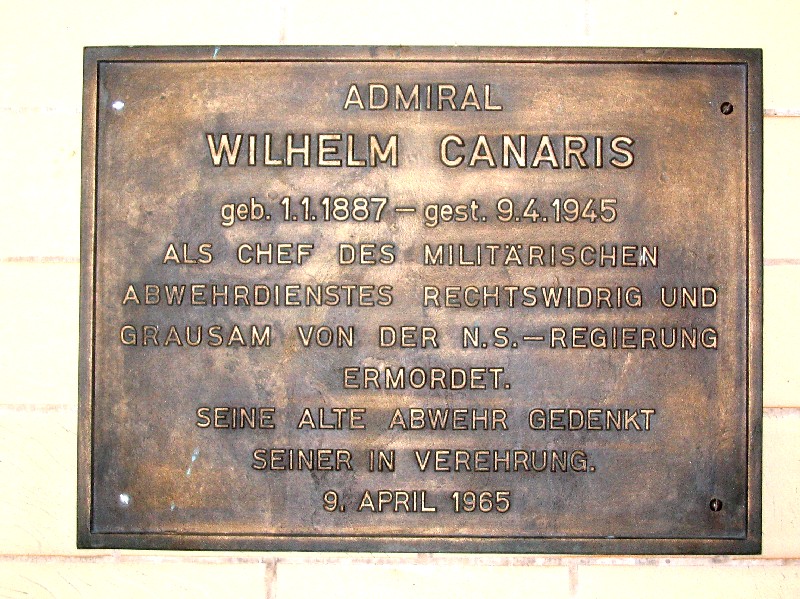



Comments
Post a Comment